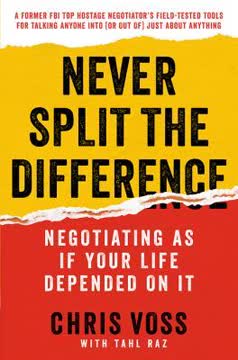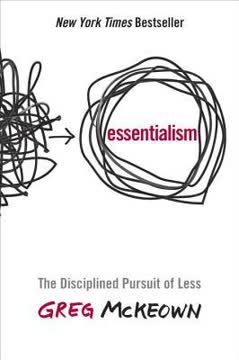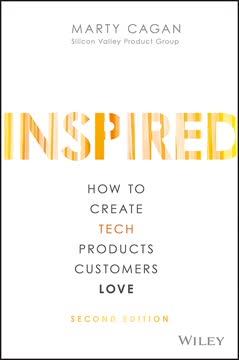Key Takeaways
1. Visual thinking is a powerful problem-solving tool accessible to everyone
If we can draw a square, a circle, a stick figure, and an arrow connecting them, we can draw any picture in this book.
Everyone can think visually. Despite common beliefs, visual thinking is not reserved for artists or designers. Our brains are hardwired for visual processing, with nearly 75% of our sensory neurons dedicated to vision. This makes visual thinking a natural and powerful tool for problem-solving and communication.
Visual thinking has universal applications. From strategic planning to project management, financial analysis to marketing, visual thinking can clarify complex ideas and reveal hidden solutions. By translating abstract concepts into simple pictures, we can:
- Identify patterns and connections more easily
- Communicate ideas more effectively
- Remember information more vividly
- Generate creative solutions more rapidly
Overcome the "I can't draw" mindset. The goal of visual thinking is not to create beautiful artwork, but to convey ideas clearly. Simple shapes and stick figures are often more effective than elaborate drawings. By focusing on the message rather than artistic merit, anyone can harness the power of visual thinking to solve problems and communicate ideas.
2. The 6x6 rule: Six ways to see problems, six pictures to solve them
There are only six kinds of problems out there, and they all share the same six pieces; identify those and your problem is half solved.
Break down complex problems. The 6x6 rule provides a framework for dissecting any problem into manageable components. By identifying which of the six problem types we're dealing with, we can choose the most appropriate visual tool to address it.
The six problem types and their corresponding visual tools are:
- Who/What - Portrait
- How Much - Chart
- Where - Map
- When - Timeline
- How - Flowchart
- Why - Plot
Apply the appropriate visual tool. Once we've identified the problem type, we can use the corresponding visual tool to explore and communicate solutions. For example:
- Use a portrait to clarify who is involved or what something looks like
- Create a chart to show quantitative relationships
- Draw a map to illustrate spatial relationships or conceptual connections
- Develop a timeline to demonstrate chronological sequences
- Design a flowchart to explain processes or decision trees
- Plot multiple variables to uncover underlying reasons or trends
3. SQVID: Unlock your imagination and tailor visuals to your audience
The SQVID is a manual five-speed transmission for our imagination: shift from "qualitative" to "change" and you can almost feel your brain changing gears.
Activate your imagination. The SQVID framework provides five questions to spark creative thinking and generate multiple perspectives on a problem:
- Simple vs. Elaborate
- Qualitative vs. Quantitative
- Vision vs. Execution
- Individual vs. Comparison
- Change vs. Status Quo
Tailor visuals to your audience. By adjusting these five "sliders," we can create visuals that resonate with specific audiences:
- Executives may prefer simple, qualitative visions of change
- Managers might need elaborate, quantitative execution plans
- Technical experts often require detailed comparisons
Enhance problem-solving flexibility. The SQVID encourages us to explore multiple angles of a problem, leading to more comprehensive solutions and better communication with diverse stakeholders.
4. Simple hand-drawn pictures are more effective than polished presentations
The more human your picture, the more human the response.
Embrace imperfection. Hand-drawn pictures invite interaction and engagement. Their unpolished nature encourages viewers to contribute ideas and improvements, rather than simply accepting or rejecting a finished product.
Avoid the pitfalls of polished presentations:
- Finished-looking visuals can shut down discussion
- Highly polished work may discourage honest feedback
- Overly professional presentations can intimidate or alienate audiences
Foster collaboration and creativity. Simple, hand-drawn visuals:
- Demonstrate that ideas are still in development
- Encourage audience participation and input
- Create a more relaxed, collaborative atmosphere
- Allow for real-time adjustments and iterations
By using hand-drawn visuals, we tap into the human desire for connection and shared problem-solving, leading to more productive and engaging meetings.
5. Combine the 6x6 rule and SQVID to create a visual thinking codex
This is the "visual-thinking codex": a diagram of diagrams that shows us how to easily create more than forty simple pictures of almost any idea.
Expand your visual vocabulary. By combining the six basic picture types from the 6x6 rule with the five SQVID questions, we can generate a wide range of visual options for any problem or idea.
The visual thinking codex provides:
- A comprehensive toolkit for visual problem-solving
- Guidance on selecting the most appropriate visual for any situation
- Inspiration for creating variations on basic visual concepts
Adapt visuals to different contexts. The codex allows us to:
- Start with a basic visual type (e.g., a map)
- Modify it using SQVID questions (e.g., simple vs. elaborate)
- Create multiple versions tailored to different audiences or purposes
By mastering the visual thinking codex, we can become more versatile and effective visual communicators in any business context.
6. Use appropriate drawing tools for personal, participatory, and performance meetings
There are three sets of business drawing tools we're going to look at, one for each of the three kinds of meetings we typically engage in: "personal" meetings with ourselves or another person, "participatory" meetings intended to generate discussion among a few people, and "performance" meetings where it's us in front of a crowd.
Match the tool to the meeting type. Different meeting contexts require different drawing tools to maximize effectiveness:
-
Personal meetings:
- Use small, portable surfaces like napkins, notepads, or personal whiteboards
- Encourage experimentation and quick iterations
- Easily save ideas by taking photos with a smartphone
-
Participatory meetings:
- Utilize large, visible surfaces like wall-mounted whiteboards or flip charts
- Provide space for multiple contributors
- Consider digital tools for remote collaboration, such as smart boards or screen-sharing software
-
Performance meetings:
- Leverage technology like tablet PCs and projectors
- Create live, dynamic presentations by drawing in real-time
- Engage audiences through the act of drawing, not just the finished product
Adapt to changing work environments. As remote work and global teams become more common, consider digital tools that allow for collaborative visual thinking across distances. However, always prioritize ease of use and accessibility over technological complexity.
7. Start with simple visuals and elaborate based on audience expertise
Our audience's willingness to look at an elaborate picture is directly proportional to its experience with the subject.
Gauge your audience's familiarity. Before presenting visual information, assess your audience's level of expertise with the subject matter. This will help you determine the appropriate level of detail and complexity for your visuals.
Follow the simplicity principle:
- For novice audiences, start with simple, high-level visuals
- As audience expertise increases, gradually introduce more detailed and complex visuals
- For expert audiences, begin with elaborate visuals to establish credibility
Build visual complexity strategically:
- Start with a basic framework that all audience members can understand
- Add layers of detail as you explain concepts and engage in discussion
- Use the SQVID framework to adjust visual complexity on-the-fly based on audience reactions
By tailoring visual complexity to audience expertise, you can:
- Avoid overwhelming novices with too much information
- Prevent boring experts with overly simplistic presentations
- Engage all audience members at their appropriate level of understanding
This approach ensures that your visual communication is both accessible and informative, regardless of the audience's background.
Last updated:
FAQ
1. What’s "Unfolding the Napkin" by Dan Roam about?
- Visual Problem-Solving Guide: "Unfolding the Napkin" is a hands-on workbook that teaches readers how to solve complex business problems using simple pictures and visual thinking.
- Four-Day Visual Thinking Course: The book is structured as a four-day workshop, guiding readers from basic drawing skills to creating impactful business visuals.
- Practical Application: It builds on Roam’s previous book, "The Back of the Napkin," by providing step-by-step exercises and real-world examples to put visual problem-solving into everyday practice.
- Universal Relevance: The book asserts that anyone in business, regardless of drawing ability, can benefit from using pictures to clarify, develop, and communicate ideas.
2. Why should I read "Unfolding the Napkin" by Dan Roam?
- Improve Communication: The book demonstrates how simple visuals can make complex ideas clearer and more memorable, improving communication in business settings.
- Boost Problem-Solving Skills: It provides a toolkit for breaking down and solving problems visually, which can lead to faster and more effective solutions.
- Accessible to All: Roam emphasizes that everyone is a visual thinker and that no artistic skill is required to benefit from his methods.
- Real-World Impact: The book includes stories and case studies showing how visual thinking has led to breakthroughs in major organizations, making the content highly practical.
3. What are the key takeaways from "Unfolding the Napkin"?
- Anyone Can Draw: If you can draw a circle, square, stick figure, and arrow, you can create effective problem-solving visuals.
- Four-Step Visual Process: The core process is "Look, See, Imagine, Show"—collect information, recognize patterns, imagine solutions, and communicate them visually.
- Six Types of Problems: All business problems can be broken down into six types—who/what, how much, where, when, how, and why—each best addressed with a specific kind of picture.
- Visuals Trump Words: Simple pictures are more effective than words alone for understanding, remembering, and sharing ideas.
4. How does Dan Roam’s visual problem-solving method work in "Unfolding the Napkin"?
- Swiss Army Knife Toolkit: Roam introduces a visual toolkit, likened to a Swiss Army knife, with "blades" representing different visual thinking tools and steps.
- The 6x6 Rule: For each of the six types of problems, there is a corresponding simple picture (portrait, chart, map, timeline, flowchart, plot) that best clarifies it.
- The SQVID Framework: To spark imagination and tailor visuals to audiences, Roam uses the SQVID (Simple/Elaborate, Qualitative/Quantitative, Vision/Execution, Individual/Comparison, Change/Status Quo) framework.
- Step-by-Step Exercises: The book is filled with interactive drills and real business scenarios to practice and reinforce each concept.
5. What are the four unwritten rules of visual thinking in "Unfolding the Napkin"?
- Rule 1: Best Description Wins: Whoever can best describe the problem (often visually) is most likely to solve it and get support.
- Rule 2: Break Down Complexity: Big problems must be broken into bite-sized, visual pieces to be understood and solved.
- Rule 3: Imagination Solves Problems: The person who sees the most possibilities—by imagining different visual solutions—wins.
- Rule 4: Human Pictures, Human Response: The more "human" and hand-drawn your picture, the more engaging and effective it is for problem-solving.
6. What is the 6x6 Rule in "Unfolding the Napkin" and how do I use it?
- Six Problem Types: Every business problem can be categorized as who/what, how much, where, when, how, or why.
- Six Picture Types: Each problem type is best addressed with a specific visual—portrait (who/what), chart (how much), map (where), timeline (when), flowchart (how), and plot (why).
- Visual Slicing: By breaking a big problem into these six slices and drawing each, you clarify the issue and reveal solutions.
- Practical Application: The book provides exercises to practice drawing each type, making the 6x6 Rule actionable for any problem.
7. What is the SQVID framework in "Unfolding the Napkin" and how does it help with imagination?
- Five Imagination Gears: SQVID stands for Simple/Elaborate, Qualitative/Quantitative, Vision/Execution, Individual/Comparison, and Change/Status Quo.
- Expanding Perspectives: By running an idea through each SQVID lens, you generate multiple ways to visualize and approach a problem.
- Tailoring to Audience: SQVID also acts as an "equalizer" to adjust your visuals to fit the needs and preferences of different audiences.
- Structured Creativity: The framework ensures you don’t get stuck in one way of thinking, encouraging both right-brain and left-brain approaches.
8. How does "Unfolding the Napkin" teach me to draw if I think I can’t?
- Start Simple: Roam insists that basic shapes—circles, squares, stick figures, arrows—are all you need to get started.
- Drawing Drills: The book includes warm-up exercises and step-by-step instructions to build confidence and skill.
- Focus on Clarity, Not Art: The goal is to communicate ideas, not create art; even crude sketches can be powerful if they clarify thinking.
- Everyone is Visual: The book explains that our brains are wired for visual processing, so everyone has the innate ability to think and communicate visually.
9. What are some real-world examples or case studies from "Unfolding the Napkin"?
- Financial Crisis Workshop: Roam describes a workshop with financial executives during the 2008 crisis, where simple pictures helped clarify strategy amid chaos.
- The Laffer Curve: The story of how a napkin sketch became the basis for U.S. economic policy illustrates the power of simple visuals.
- Thomson Corporation: A complex branding problem was solved with a multivariable plot, leading to a $17.2 billion business move.
- Microsoft Excel Team: Hand-drawn scenario sketches led to breakthrough software design discussions, showing the value of "human" pictures.
10. How can I apply the visual thinking tools from "Unfolding the Napkin" in my own work?
- Use in Meetings: Bring a pen and paper or whiteboard to meetings and start sketching ideas, processes, or problems as they’re discussed.
- Problem Breakdown: When faced with a complex issue, use the 6x6 Rule to break it into visual slices and draw each one.
- Tailor Presentations: Use the SQVID framework to adjust your visuals for different audiences—executives, managers, or technical teams.
- Practice Regularly: The book encourages making visual thinking a habit, using pictures whenever possible to clarify and communicate at work.
11. What are the most important quotes from "Unfolding the Napkin" by Dan Roam and what do they mean?
- "Whoever is best able to describe the problem is the person most likely to solve it." — Emphasizes the value of clear, visual problem definition.
- "We can solve our problems with pictures." — The central thesis that visual thinking is a universal tool for problem-solving.
- "The more human your picture, the more human the response." — Reminds us that rough, hand-drawn visuals invite engagement and collaboration.
- "Problems don’t get solved by the smartest or the fastest or the strongest; they get solved by the one who sees the possibilities." — Highlights the importance of imagination and visual exploration in finding solutions.
12. What tools and materials do I need to use Dan Roam’s methods from "Unfolding the Napkin"?
- Basic Drawing Tools: All you need is a pen, pencil, or marker—Roam recommends a no. 2 pencil, Sharpie, or Pilot pen.
- Drawing Surfaces: Use anything from napkins and notebook paper to personal whiteboards or digital tablets.
- Three Meeting Modes: The book discusses "personal" (one-on-one), "participatory" (small group), and "performance" (large group) settings, each with suitable drawing surfaces.
- No Special Software Required: While digital tools can help, Roam shows that even PowerPoint’s built-in drawing tools or a simple whiteboard are sufficient for effective visual thinking.
Review Summary
Unfolding the Napkin receives mostly positive reviews, praised for its visual approach to problem-solving and communication. Readers appreciate the hands-on exercises and real-world applications. Many find it helpful for presentations, data interpretation, and simplifying complex ideas. Some reviewers note its similarity to Roam's previous book but find this one more practical. The book's emphasis on simple illustrations and visual thinking is widely regarded as valuable for various professions. A few readers found it challenging or repetitive, but overall, it's recommended for improving visual communication skills.
Similar Books







Download PDF
Download EPUB
.epub digital book format is ideal for reading ebooks on phones, tablets, and e-readers.






